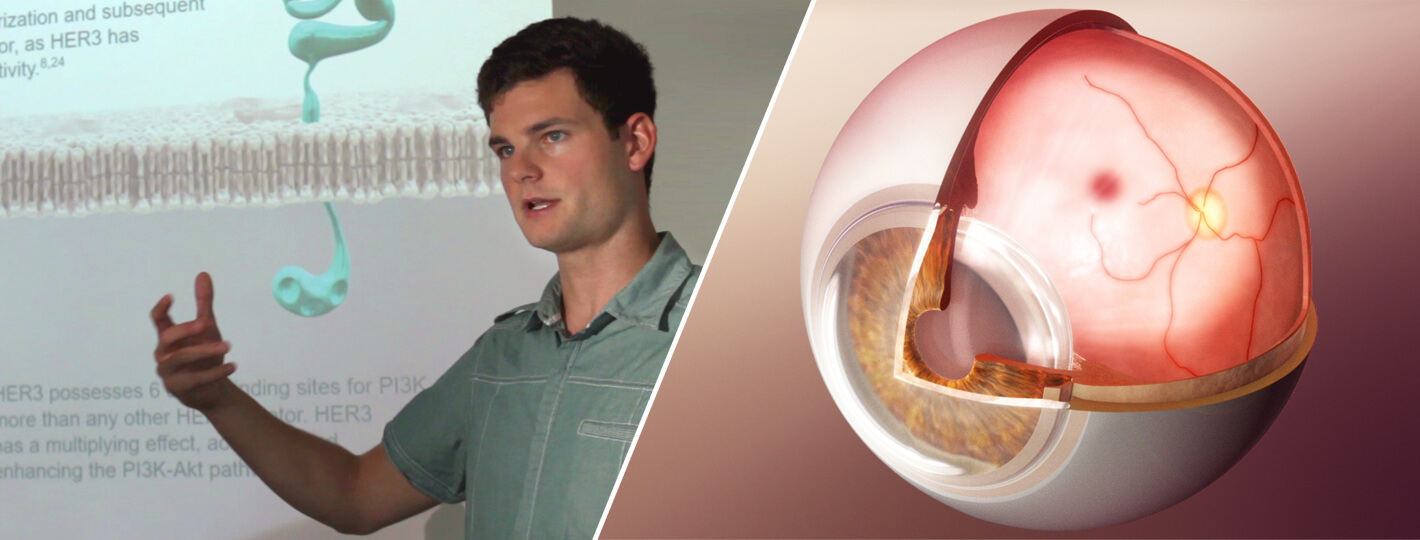Different tools for different audiences: animated PowerPoint presentation vs animated film
HCPs, patients, and employees need reliable information, so they can make more informed decisions. Your MSLs need to learn how to communicate with specialists about newly published clinical trial results. Physicians need to understand how the mechanism of action of your therapeutic compound differs from the standard of care. Patients need accurate, up-to-date information on diseases, so they can get tested and stay healthy.
The way you choose to convey this information affects the costs, timing, flexibility, impact, and return on your investment.
Within this wide field of possibilities, two main formats are still the most popular: classic PowerPoint presentations and animated films.
Both formats are suitable for the representation of complex relationships or medical issues, but they have some fundamental differences in terms of handling and scope. These differences establish how you interact with your target audience and how your key messages are absorbed.
When it comes to illustrating the temporal and spatial sequence of biological, medical, or technological processes, animated films are the first choice. Impressive and visually striking, they offer comprehensive solutions within a determined period: the viewer starts the application and is immersed in the topic for a defined length of time. On the other hand, the length of an animated PowerPoint presentation depends on the presenter, permitting targeted interaction with the audience.
To bring animations to life, a sense of space and dynamic camera movements are required. These enable positioning and establish a clear relationship between the film’s various elements, while the color universe, sounds, and background music inspire an emotional response in the viewer. A voice-over artist’s narration can also be integrated in order to explain more details.
In contrast to the spatiality of an animated film, animated PowerPoint presentations are depicted on the 2D plane. Although 3D objects can be integrated in the form of graphics, their interactions on the film are necessarily flatter. The advantage of these animations, though, is that the sequential insertion of individual illustrative elements can be perfectly synchronized with the speaker’s pace. This helps create a coherent story that works best with an individual presenter who ultimately determines the audience’s emotional response to and understanding of the material.
In addition, animated PowerPoint presentations can be designed to be non-linear, with the presenter serving as a binding element. With each move from one slide to another, the viewer easily accepts a spatial leap or step in content progression. This transition can be more difficult to express in animated films, which need unique camera transitions, zooms, and clear cuts to avoid confusing the audience when moving from one section to another.
Furthermore, animated PowerPoint presentations can be an economical alternative to animated films. And, of course, an animated PowerPoint presentation is much easier and quicker to extend if needed in the future than a self-contained animated film.
PowerPoint presentations and animated films unquestionably offer a lot of possibilities. However, attractive visuals alone do not guarantee the success of a story. Only if you take advantage of the respective strengths of both formats can you unlock the full potential of memorable, effective visual storytelling.
Do you have any questions? Please do not hesitate to contact us. Email us or arrange an online meeting.




